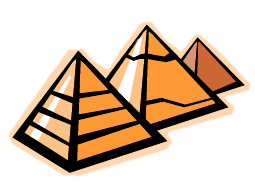- Why Mining Matters
- Jobs
- Safety
- Environment & Operations
- FAQ
- Links
- Fun Stuff
Did You Know?
Did you know that the oldest mine in Canada, and perhaps the oldest in North America, was at Davidson Cove on the shore of the Bay of Fundy?
Mi’kmaq mined jasper and agate at Davidson Cove and fashioned them into cutting tools and arrowheads 1500 years ago! These weapons and tools were traded all around the Bay of Fundy and have been found in several sites around Atlantic Canada. In fact, about 4500 Mi’kmaq artifacts from Davidson Cove have been found at a Mi’kmaq settlement in the Debert area, about 100 kilometres up the Bay of Fundy from Davidson Cove.
Mi’kmaq mined jasper and agate at Davidson Cove and fashioned them into cutting tools and arrowheads 1500 years ago! These weapons and tools were traded all around the Bay of Fundy and have been found in several sites around Atlantic Canada. In fact, about 4500 Mi’kmaq artifacts from Davidson Cove have been found at a Mi’kmaq settlement in the Debert area, about 100 kilometres up the Bay of Fundy from Davidson Cove.
Did you know that coal was the first commercially-mined material in Nova Scotia?”
We first mined it in Sydney, Cape Breton, in 1672. The first commercial coal mining venture in Canada was established by the French in 1720 in Cow Bay, Cape Breton, to supply the Fortress of Louisbourg. Nova Scotia’s first international trade in minerals took place in 1724 when a shipment of coal was sent to Boston.
We first mined it in Sydney, Cape Breton, in 1672. The first commercial coal mining venture in Canada was established by the French in 1720 in Cow Bay, Cape Breton, to supply the Fortress of Louisbourg. Nova Scotia’s first international trade in minerals took place in 1724 when a shipment of coal was sent to Boston.
Did you know that Disney World was built on Nova Scotia rock?
Aggregate from Nova Scotia was used as fill at Disney World in Orlando, Florida, and to help make the highways that bring millions of people to Orlando each year. Nova Scotia’s mining and quarrying industry exports about one third of its production to the United States each year, or about $105 million worth of minerals. Nova Scotia’s easy access to shipping by sea, and close proximity to the United States, makes us an important supplier to the US construction industry.
Aggregate from Nova Scotia was used as fill at Disney World in Orlando, Florida, and to help make the highways that bring millions of people to Orlando each year. Nova Scotia’s mining and quarrying industry exports about one third of its production to the United States each year, or about $105 million worth of minerals. Nova Scotia’s easy access to shipping by sea, and close proximity to the United States, makes us an important supplier to the US construction industry.
Did you know that there are many uses of uranium that are vital to our health, safety and modern standard of living? For example:


Medicine - Radioisotopes are widely used for diagnosis, medical research and treatment of some illnesses, such as cancer. About half of all people in Canada will experience the benefits of nuclear medicine in their lifetime.

Smoke Detectors - A radioisotope derived from the plutonium formed in nuclear reactors is used in most household smoke detectors.

Space Missions - Radioisotope thermal generators (RTGs) are used in space missions. The Voyager space probes, the Cassini mission to Saturn, the Galileo mission to Jupiter and the New Horizons mission to Pluto all are powered by RTGs. The Spirit and Opportunity Mars rovers have used a mix of solar panels for electricity and RTGs for heat. The latest Mars rover, Curiosity, is much bigger and uses RTGs for heat and electricity as solar panels would not be able to supply enough electricity.”
Did you know that there is rock in your toothpaste?
Most toothpastes contain powdered limestone which is used as an abrasive to clean off plaque. Limestone quarried in Nova Scotia is also used to make cement, a key ingredient in concrete. Concrete is the second most widely used product on the planet after water.
Most toothpastes contain powdered limestone which is used as an abrasive to clean off plaque. Limestone quarried in Nova Scotia is also used to make cement, a key ingredient in concrete. Concrete is the second most widely used product on the planet after water.
Did you know that each person uses 10 to 15 tonnes of aggregate each year? That's one full tandem truckload per person! We need 10-15 million tonnes of aggregate each year to keep Nova Scotia running. For example, building a typical single family home requires about 160 tonnes of gravel (that's about 11 truckloads). Building a school or hospital requires about 15,000 tonnes of aggregate.

Did you know that gypsum has been a key ingredient in the building of homes and other buildings for thousands of years?
Archaeologists have found traces of gypsum on walls dating back to 9000 B.C. in Anatolia, Turkey. Gypsum was also used in ancient Egypt, including on the pyramid of Kheops, which was constructed in 2700 B.C., and is the only surviving wonder of the ancient world (thanks, in part, to gypsum!). Because gypsum is fire resistant, in 1667, one year after the Great Fire of London, King Louis XIV of France issued an edict requiring that a coating of gypsum be placed on the interior and exterior of buildings to reduce the risk of fire spreading.
Archaeologists have found traces of gypsum on walls dating back to 9000 B.C. in Anatolia, Turkey. Gypsum was also used in ancient Egypt, including on the pyramid of Kheops, which was constructed in 2700 B.C., and is the only surviving wonder of the ancient world (thanks, in part, to gypsum!). Because gypsum is fire resistant, in 1667, one year after the Great Fire of London, King Louis XIV of France issued an edict requiring that a coating of gypsum be placed on the interior and exterior of buildings to reduce the risk of fire spreading.
Did you know that building one kilometre of two-lane highway requires about 18,000 tonnes of aggregates? That’s enough to fill four Olympic-sized swimming pools!

Did you know that salt is essential for life?
Sodium is a nutrient that the body cannot manufacture but which is necessary for our bodies to remain chemically balanced and for our muscles and nervous system to function. All our bodily fluids are salty - blood, sweat, tears, saliva - and one of our four taste buds is programmed to sense it.
Sodium is a nutrient that the body cannot manufacture but which is necessary for our bodies to remain chemically balanced and for our muscles and nervous system to function. All our bodily fluids are salty - blood, sweat, tears, saliva - and one of our four taste buds is programmed to sense it.
Did you know that aggregates are the most mined materials in the world?
People have used sand and stone for foundations for thousands of years but it was the Romans who refined the production and use of aggregate when they used it to build their vast network of roads and aqueducts. The invention of concrete created an immediate, permanent demand for construction aggregates. Today, everything built with concrete contains aggregates, including homes, roads, school and hospitals.
People have used sand and stone for foundations for thousands of years but it was the Romans who refined the production and use of aggregate when they used it to build their vast network of roads and aqueducts. The invention of concrete created an immediate, permanent demand for construction aggregates. Today, everything built with concrete contains aggregates, including homes, roads, school and hospitals.
Did you know that while mining and quarrying is a big industry, it actually uses relatively little land? Less than 3000 km of Canada's land (that's less than 0.03%) has been used to produce minerals.

Did you know that Point Pleasant Park, now considered one of Nova Scotia’s most beautiful natural spaces, contains over 50 former quarries that provided stone to build forts and walls in the Park?For example, slate from the Quarry Pond was used to help build the Prince of Wales Tower, which is the oldest Martello tower in North America.
Did you know that gold is used in most computers and electronics, such as the one you’re using now? Gold is the most flexible of all metals - a single ounce can be mechanically stretched into a sheet 300 square feet!

Did you know that asphalt is recyclable? When paving crews dig up old roads and highways, they often save the asphalt so it can be crushed, mixed with other aggregate and used again as aggregate in new pavement. This reduces our environmental impact by diverting waste from landfill, and reducing the amount of quarrying we need to do for new material.
Did you know that zinc supplements are saving hundreds of thousands of lives each year in developing countries? Nearly a third of the world’s population suffers from zinc-related malnutrition so mining companies and UNICEF are working together to provide millions of zinc supplements to children in places like Africa. The “Great Protector,” as zinc is sometimes called, is also used to protect humans in products such as sun screen, zinc lozenges and vitamins as well as to protect metals (galvanizing).

















































































